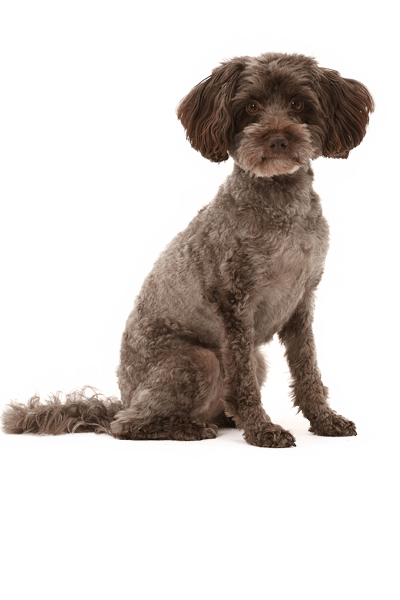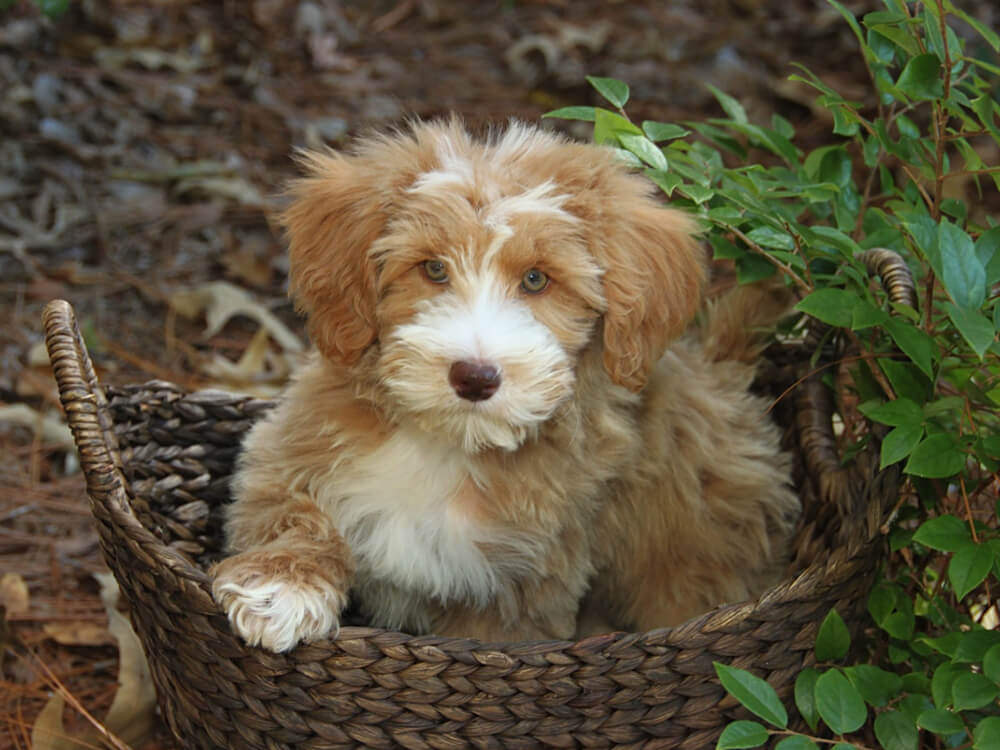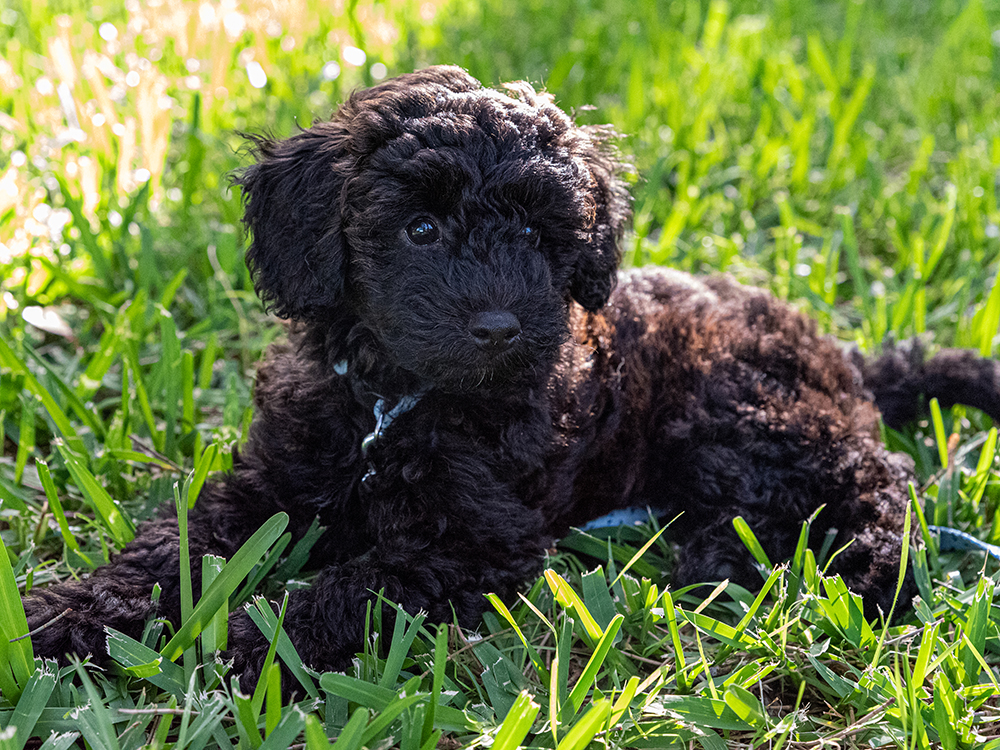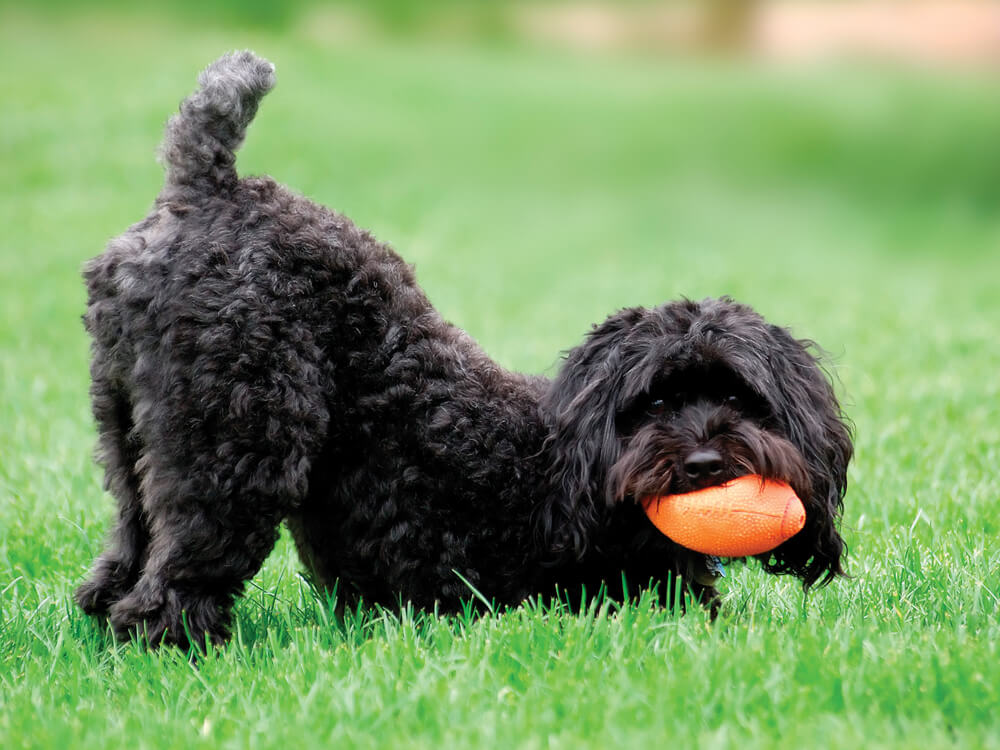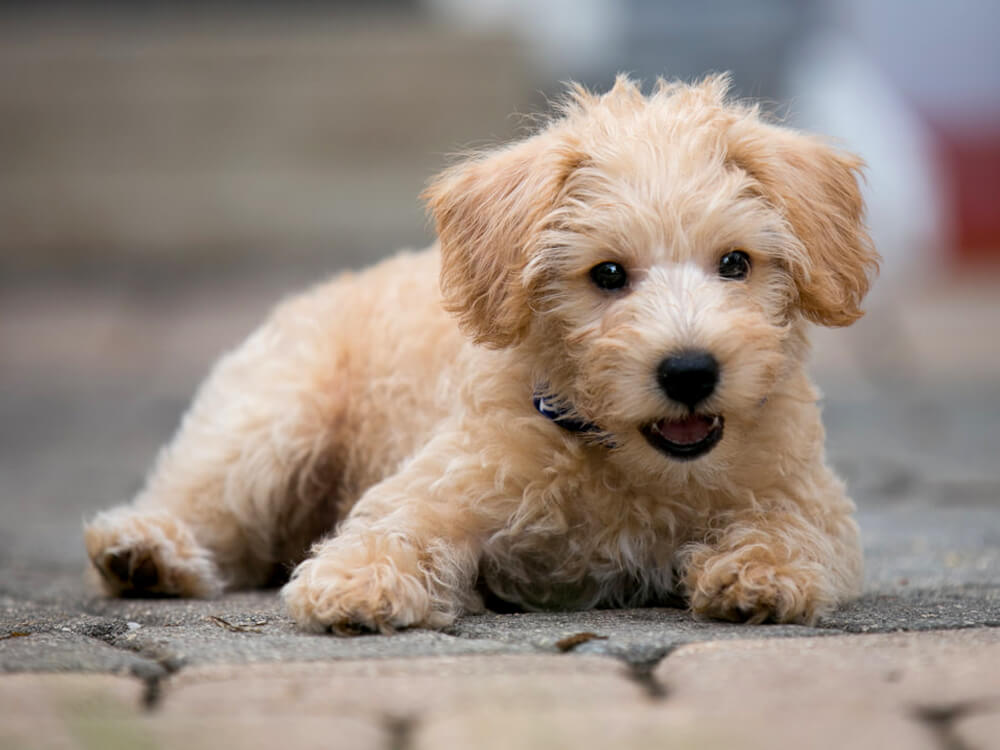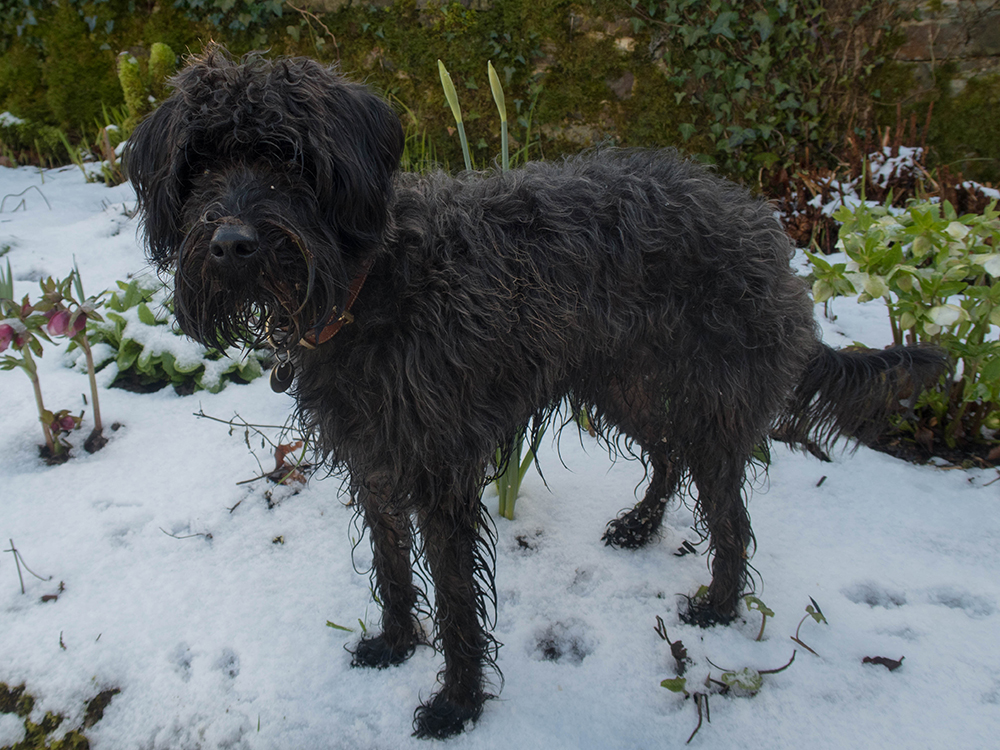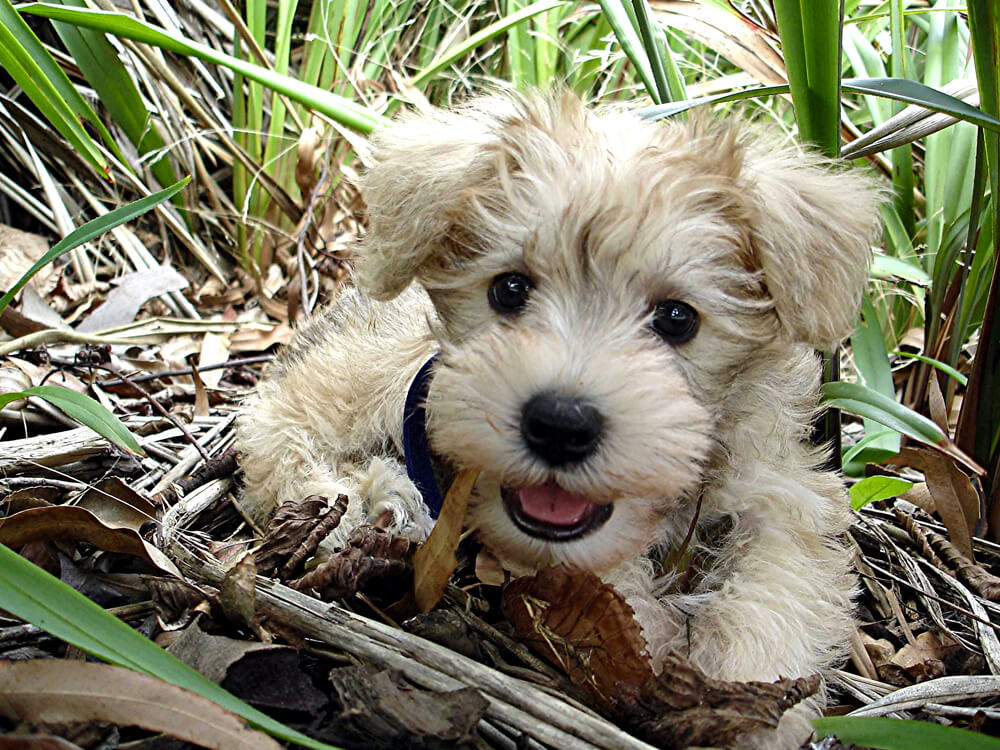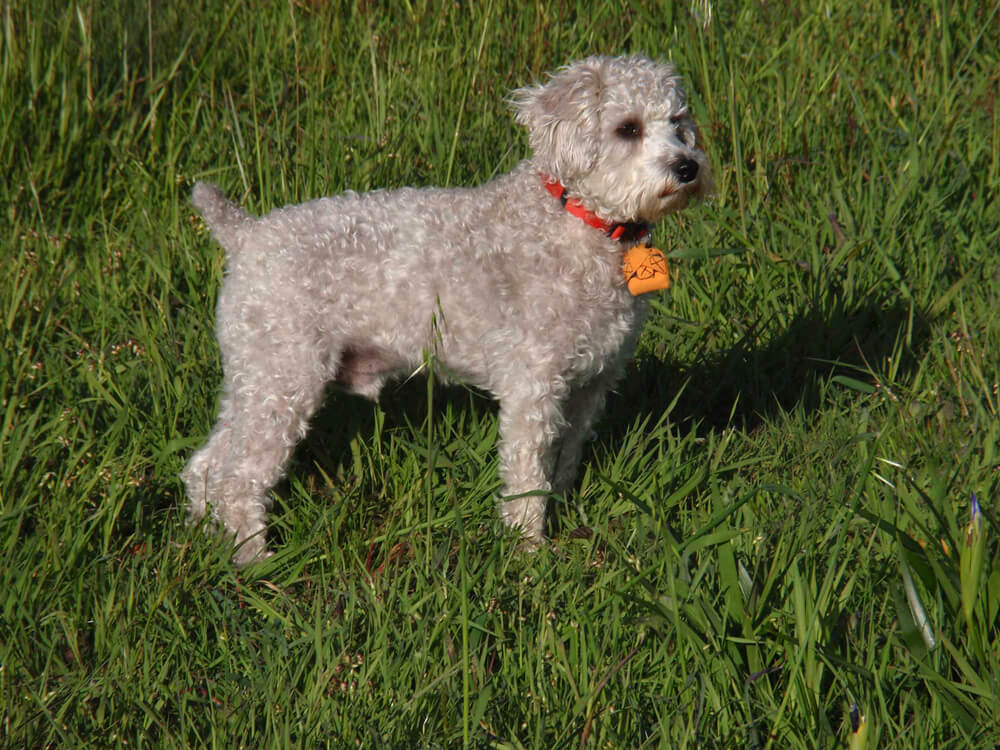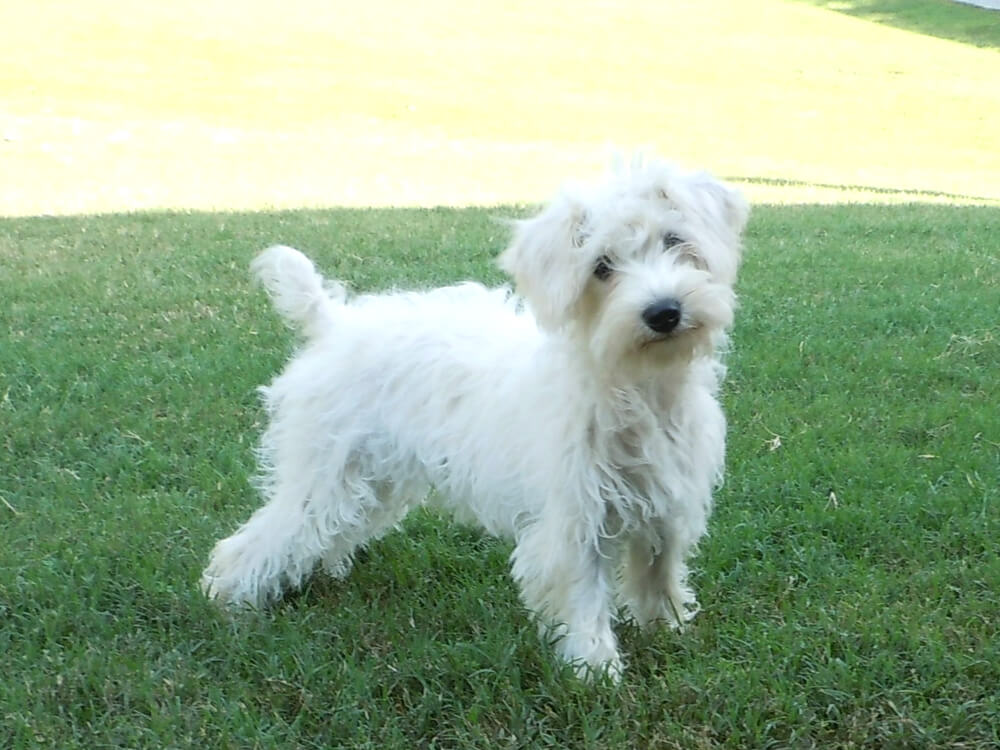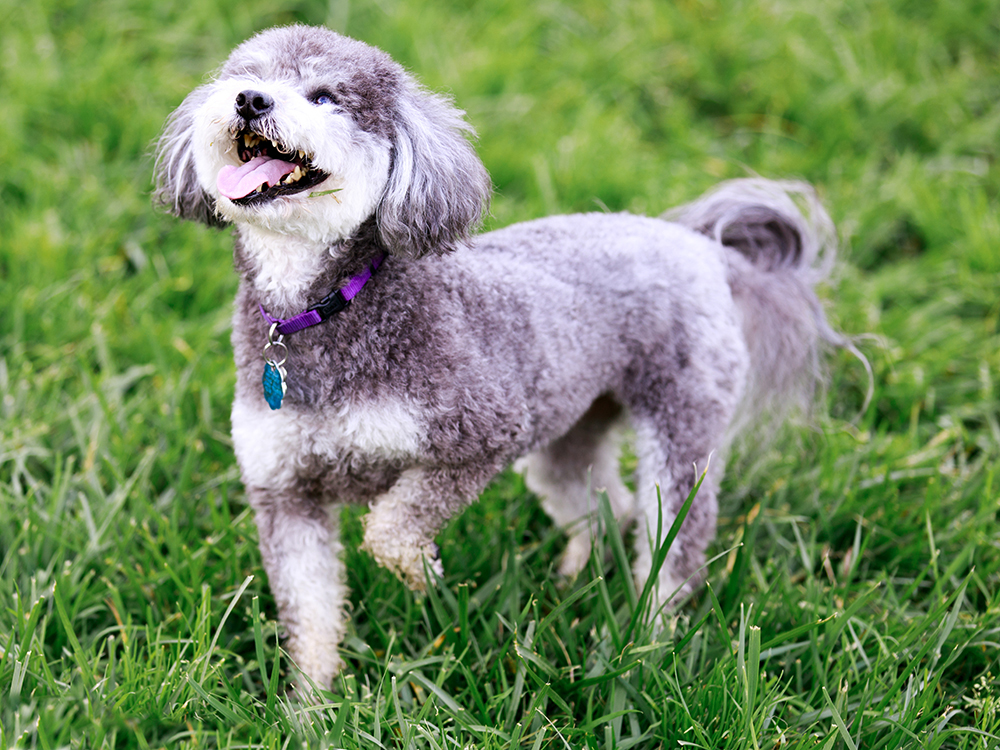
Schnoodle Breed Pictures
Vital Breed Stats
| Height: | 46 - 51 cm M | 43 - 48 cm F |
| Weight: | 14 - 20 kg M | 14 - 18 kg F |
| Life Expectancy: | 11 - 14 years |
| KC Registered: | No |
Breed Characteristics
| Size: |  |
| Grooming: |  |
| Exercise Level: |  |
| Trainability: |  |
| Barking Level: |  |
| Good with Children: |  |
| Good with other pets: |  |
| Affectionate: |  |
| Protective: |  |
| Cost to Keep: |  |
Give a thumbs up if you love the Schnoodle

0
More About the Breed
History
The Schnoodle is a new breed developed in the 1980s due to the increased popularity of Poodle mixes. It is a cross between a Schnauzer and a Poodle. Although popular, the Schnoodle is not as famous as the Goldendoodle, Labradoodle, Cockapoo, and Maltipoo among others.
Since the Schnoodle is a designer breed, major kennel clubs including The Kennel Club in the UK do not recognise it as a full-fledge breed. However, some kennel clubs accept crossbreeds for performance events such as obedience and agility trials.
Appearance
The Schnoodle is a medium-size dog, weighing 13 to 75 pounds and standing 25 to 66 centimetres, depending on which type of Poodle (Miniature, Toy, or Standard). With that said, the gene pool can produce a wide variety of Schnoodle types, but most common Schnoodle designer dogs are either Toy or Miniature types of either parent breed. The Schnoodle is fined-boned with strong legs – a reflection of its athletic form.
When it comes to appearance, one consistent feature of the Schnoodle is its nicely proportioned head that is inherited from both parent breeds. Schnoodles’ muzzles are short and moderately concave, tapering to a large and dark coloured nose. They have eyes that are dark coloured and round-shaped, which is framed by an abundance of eyebrows. Some Schnoodles have long ears that are set high atop the head.
The coat can vary depending on which parent breed it takes after, since Schnauzers have rough-wiry coats, while Poodles have soft and curled coats. However, most Schnoodles wear coats that fall between. The colours include grey, brown, black, white, apricot, black and tan, black and white, and sable.
Grooming
Temperament
The Schnoodle can inherit either of the parent breed’s temperament. Schnauzers are loyal and extremely protective, Poodles are highly intelligent and outgoing. Often, the ideal Schnoodle will inherit the best characteristics of the parents but a little less wilful than the Schnauzer and not as excitable as the Poodle.
Schnoodles do not like to be separated from their owners and will suffer from separation anxiety. It is best to have at least one member stay at home most times or get the Schnoodle enrolled in a doggy daycare. The Schnoodle is playful and entertaining. It is a natural watchdog, thanks to its Schnauzer parent, and will only bark when strangers are about.
Intelligence
The Schnoodle is smart and a quick learner, thanks to its Poodle parentage. It can be a bit headstrong, so housetraining may be a little challenging but nothing that a steady hand and consistent training can’t manage. It adores interactive games and greatly excels at dog sports like obedience and agility trials.
These dogs are known for being incredible family pets, especially around children. However, the Schnoodle’s interaction with kids must be supervised, so it does not end up getting too rowdy. When it is socialised early, this designer dog breed gets along well with other dogs and the family cats. However, they will not think twice about chasing smaller animals, so care should be taken.
Nutrition
- Senior and less active: up to 986 calories daily
- Typical adults: up to 1110 calories daily
- Physically active/working dogs: up to 1230 calories daily
Feeding
Health
Exercise
Cost of Ownership
Do you know how much owning a dog will cost you? Most people about to buy a Schnoodle puppy, for example, will tell you to only add the purchase price and the estimated amount of the dog food, and that’s it. Guess what? This isn’t the case. More than the purchase price of a Schnoodle, which is around £500 to £900, other expenses also include the following:
- Pet insurance – £25 to £45 a month.
- Dog food – £20 to £30 a month.
- Veterinary care – £900 a year.
- Dog supplies – £200, one time.
- Grooming service – £50 to £60, twice a year.
Schnoodle Breed Highlights
- The Schnoodle is a hybrid dog developed by crossing a Schnauzer and a Poodle.
- Grooming depends on the type of coat it inherits: rough-wiry (Schnauzer parent) or soft-curly (Poodle parent)
- Schnoodles are eager to please, so training is easy enough for a first-time dog owner.
- Inheriting the best characteristics of both parents, Schnoodles are loyal, protective, fun-loving and highly intelligent.
- They are quite active and as such, will require plenty of exercises daily.
